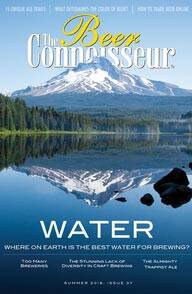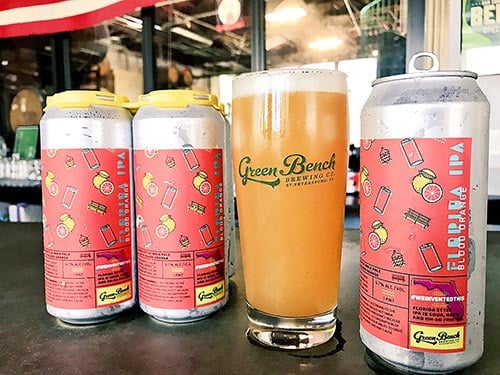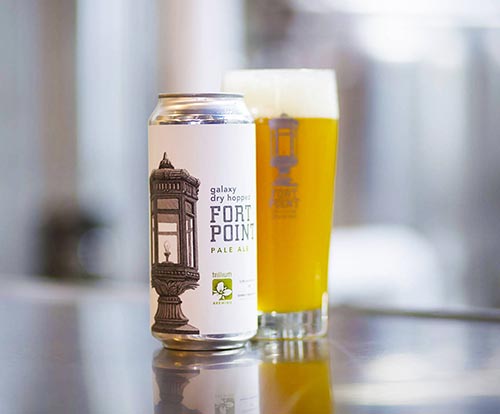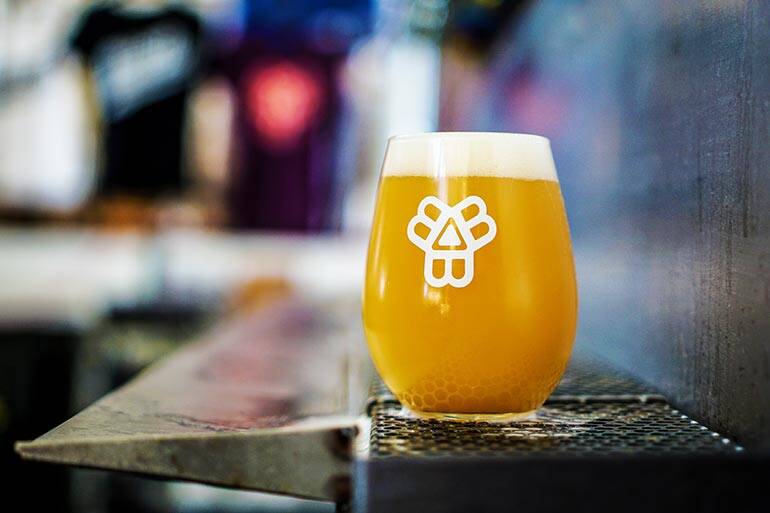Start 14-Day Trial Subscription
*No credit card required

What is Unfiltered Beer?
Why are these hazy beer styles among the most popular in craft beer and brewing these days?
However, as has been the case throughout modern craft beer’s history, the pendulum swung quickly in response to these beers. Though there is still a thriving market for heavily filtered West Coast IPAs that showcase classic American hops, unfiltered IPAs (often called Hazy IPAs) with new-school hops that feature a far juicier aroma and flavor profile are becoming the new norm in IPA production ‒ and they may even be opaque from lack of filtering.
These Hazy IPAs focus on an extremely soft and easy-to-drink mouthfeel that jettisons the trademark bitterness that was the hallmark of the IPA style for decades. Instead, Hazy IPAs blast drinkers with tremendous juicy, fruity and resiny aromas and flavors drawn from the various hop varietals employed.
These unfiltered Hazy IPAs are often called New England IPAs because they were pioneered in that region, starting with The Alchemist in Vermont, with its Heady Topper DIPA and Focal Banger IPA. Similarly, Lawson’s Finest Liquids (also in Vermont), was ahead of the game with its hazy Sip of Sunshine IPA and Double Sunshine Double IPA.

Unfiltered Hazy IPAs are often called New England IPAs because they were pioneered in that region, starting with The Alchemist and Lawson’s Finest Liquids with its hazy Sip of Sunshine IPA.
Photo Courtesy Lawson's Finest Liquids
It must be noted that these while these beers were the standard bearers for unfiltered, hazy and hop-forward IPAs, they have been left in the dust (no pun intended) by the hordes of hazy ales that followed in their footsteps. Though still extremely popular and highly regarded, the market is reaching a saturation point when it comes to Hazy IPAs.
In pursuit of novelty and new taste experiences, brewers continue to innovate in the sphere of unfiltered beers, especially within Hazy IPAs. Milkshake IPAs, FLIPAs (Florida-style IPAs) and glitter beers are three fascinating spin-offs of unfiltered IPAs:

Milkshake IPA – Invented in 2015 by Jean Broillet IV of Tired Hands Brewing Co. as a collaboration with Sweden’s Omnipollo, Milkshake IPAs are extremely hoppy but are brewed with lactose sugar and oats to further foreground the unfiltered aspect of the base IPA and provide an exceptionally creamy, smooth mouthfeel. Beyond that, the fruit-forward hops are often combined with fruits or fruit purees to add even more sweetness to an already juicy and fruity IPA concoction.
Photo Courtesy Twitter / Tired Hands Brewing

FLIPA – Florida-style IPAs originated with the tremendous brewing team at Green Bench Brewing Co. in St. Petersburg, Florida, as a hybrid between an unfiltered Hazy IPA and a sour IPA, another burgeoning IPA spinoff that originated in Colorado and became popular further west. FLIPAs showcase an immense amount of fruit in the aroma and flavor, and most examples are brewed with fruit puree. Most of Green Bench’s examples also bridge the gap between fruity and sour, using fruits such as grapefruit, blood orange, cherry and guava that can be used for both tart character as well as fruitiness.
Photo Courtesy Twitter / Green Bench Brewing

Glitter beers – A rather gimmicky style that has grown in stature thanks its exposure on social media platforms like Untappd and Instagram, glitter beers are most often unfiltered Hazy IPAs that have been brewed with something called luster dust – a blend of sugar, maltodextrin and mica-based iridescent pigments – creating a swirling vortex of pixie dust in your glass. Don’t worry, it’s FDA-approved! A few notable examples of glitter beer have come from Three Weavers Brewing, Sasquatch Brewing, Pelican Brewing, Council Brewing and Black Cloister.
Photo Courtesy Twitter / Council Brewing
Though IPAs are clearly the standard bearer for unfiltered beers in the modern craft beer scene, many sour and wild ales often feature a certain haziness due to the presence of wild yeast or from bottle-conditioning after packaging. The Gose style, which has experienced a modern resurgence due to its drinkability and thirst-quenching elements, is an unfiltered sour beer style that is often cloudy and hazy in appearance. A number of popular sour and wild ales (such as Prairie Artisan Ales Funky Gold Simcoe, Orpheus Brewing’s Serpent Bite and De Proef and Trillium’s Bouket) have gained ground due to another process that benefits from the popularity of hazy beers: dry hopping.
Dry hopping is a brewing process in which hops are added in a secondary tank, usually at a rate of ¼ to ½ ounce per gallon, to provide a massive burst of aroma and flavor in beers that are already overflowing with complexity and delicious elements. Because the hops are not boiled, no oil will be extracted, meaning no bitterness will be picked up from the dry-hopping process – a perfect accompaniment to the New England IPAs that focus more on juicy hop aroma and flavor than bitterness.
Lucky craft beer drinkers can find a wealth of fascinating styles at their local bottles shops these days, with plenty of unfiltered beers among them. Led by hyped-up and hopped-up Hazy IPAs, unfiltered beers are here to stay. #NoFilter

Dry hopping provides no added bitterness to beers – a perfect accompaniment to New England IPAs that focus more on juicy hop aroma and flavor than sky-high IBU totals.
Photo Courtesy Trillium Brewing Co.



